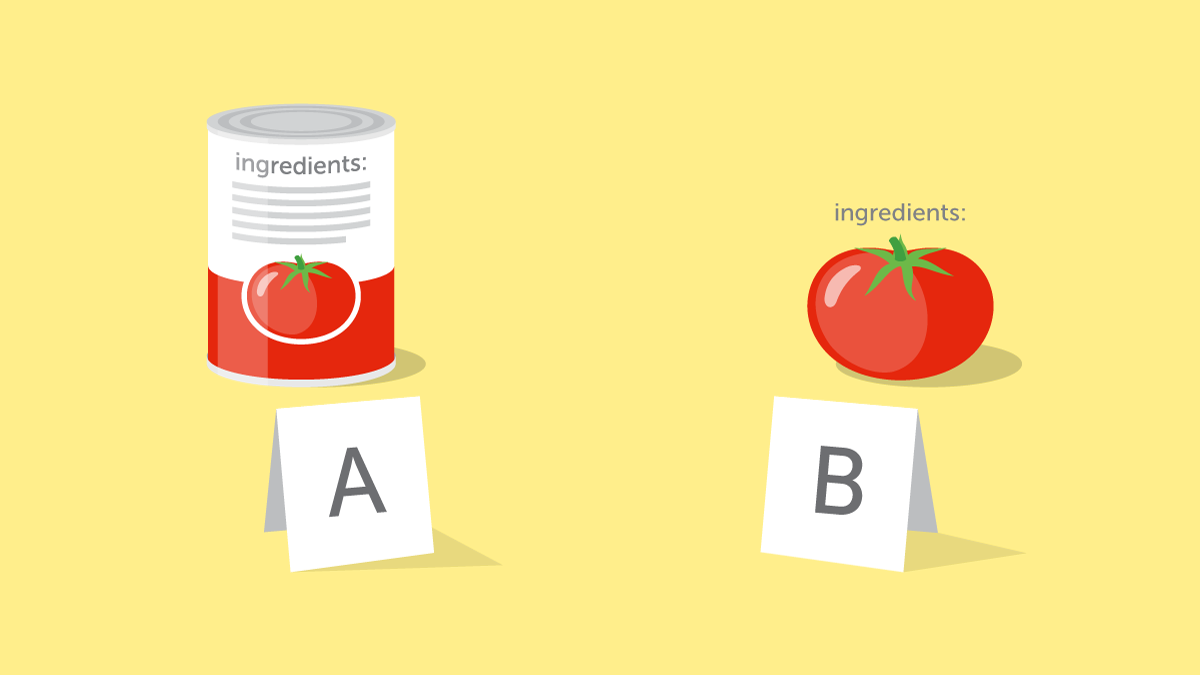Get ready to chew on some interesting food for thought as we explore the next trends in the evolution of food and beverage advertising for 2017.
Food and beverage advertising has come a long way from its humble beginnings. From a past dominated by regionally unique products to the present practices of mass segmentation, marketing for the food and beverage industry has evolved significantly over the past century. Except the story doesn’t end there.
Consumer tastes are always changing, and legacy food and beverage brands want to keep pace to stay relevant. Here are just some of the ways the industry will advance in light of the food and beverage marketing top trends for 2017.
Ingredients Lists Will Condense
Look on the back of the average food product and you are likely to find some heavy reading that may require a chemistry degree to parse through. As food makers industrialized, lengthy ingredients lists became the norm in order to provide for a long shelf life as well as the desired flavor and texture profiles at a low cost.
But in recent years, consumers began pushing back against long-winded labels. When they see an ingredient like thiamine mononitrate they are more apt to put the product back on the shelf than in their cart.
Recognizing this problem, big food brands have begun to trim “scary sounding” ingredients in favor of ones that sound like they are sourced from your own pantry. For example, McDonald’s added the Artisan Grilled Chicken, which is 100% chicken with no antibiotics. Changes like these allow consumers to stick with brands they know and trust while feeling comfortable eating familiar ingredients.
Brands to Offer Healthier Options
Another response to consumer criticism sees manufacturers of snacks and soft drinks marketing healthier products. In this regard, PepsiCo has begun acquiring brands that make the fermented probiotic drinks and kombucha. Another effort from PepsiCo aims to add sophistication to its Quaker Oats brand through delivered meal kits that emphasize the versatility of its convenient off-the-shelf food products.
Comfort Food Goes Vegetarian
In another effort to eat more nutritious ingredients, consumers are deviating from traditional comfort foods such as pasta in favor of vegetable-based alternatives. Pinterest searches for pasta dishes such as stroganoff, lasagna and macaroni have fallen 50-69%, while comfort food searches accompanied by “veggie” have soared 336%.
Of these substitutions, expect cauliflower to replace a lot of ingredients and become a food trend in its own right. Cauliflower will begin to appear as a popular menu item just like Brussels sprouts and kale have over the past few years.
So whether by simplifying ingredients lists, acquiring health food brands or adding vegetable twists to comfort classics, food and beverage brands are seeking to meet the demands of consumers who want to eat healthier as well as cut unpopular ingredients from their diet. Thus, consumers can meet their New Year’s resolutions to do better by their bodies while brands can meet their own sales goals.

